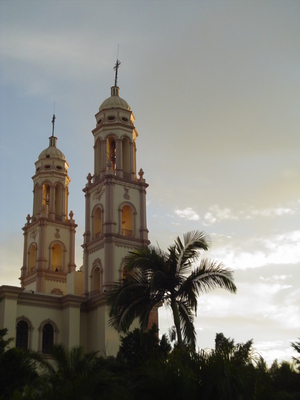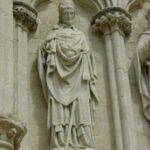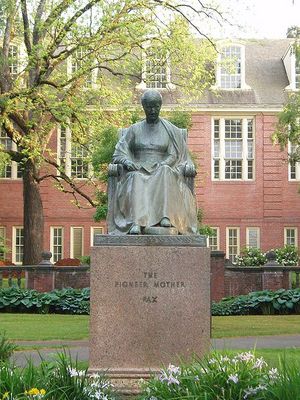When we think of saints we do not usually think of drug dealers. Jesus Malverde, however, known to law enforcement officials as the “Narco Saint” is considered by many to be the patron saints of drug dealers. Smugglers bringing drugs across the border from Mexico pray to him to deliver them safely across and carry icons and images of the saint with them.
For example, it is said that in Bakersfield, California, 80% of Mexican nationals involved in the drug trade possess at least one likeness of Jesus Malverde: such as on a prayer card, a candle, or a statue. Police in such areas often look for these types of items to see if a person is involved in the drug trade.
But Malverde is more than just a “Narco Saint.” He is revered by many across Mexico and the United States as a protector and defender of the poor. To them Jesus Malverde is the “Generous One,” or “The Angel of the Poor.”
The Story of Jesus Malverde
Biographical details of Jesus Malverde are sketchy at best. There is not even evidence to show that such a man ever really existed. However his story, in its various forms, has gone to inspire thousands upon thousands of Mexicans.
The story goes that Jesus Malverde was born sometime around 1870. He lived during the reign of Mexico’s longest running dictator: Porfirio Diaz. During this period, known to history as the Porfiriato, was marked by the influx of foreignors in Mexico, a time of progress for the richest Mexicans but a time of poverty and despair for the lowest classes.
Some people say that Jesus Malverde was a railway worker, or a construction worker, or even a tailor. Whatever his profession, at some point during his career he turned to crime. Stories say that his parents died of hunger, unable even to afford food.
A 20th century Robin Hood, Jesus Malverde is said to have robbed from the rich to give to the poor. The bandit worked in the hills near the town of Culiacan, the capital of the state of Sinaloa, Mexico. He was eventually caught by the state and put to death. To tie his story even more to his namesake, Jesus Christ, some say that he was betrayed by a friend for the sum of 10,000 pesos. The most popular version of the story says that the governor of Sinaloa was hung from a tree, but others say that he was shot.
Jesus Malverde’s death came on the 3rd of May, 1909, just two years before the end of Porfirio Diaz’s regime and the beginning of the Mexican Revolution. Jesus Malverde would never live to see the end of the dictator’s reign or the beginning of the new era in Mexican history and the rise of such other folk heroes as Emilio Zapata and Pancho Villa.
Jesus Malverde the Narco-Saint
Not long after his death, stories of miraculous events featuring Jesus Malverde begin to appear. In one story he returns a woman’s lost cow. In another Malverde returns to rescue lost mules of one of his friends carrying loads of gold and silver.
But tales of the Narco Saint involve more than just lost mules and cows. Sinaloa, where Jesus Malverde’s legend began, is also where drug smuggling began in earnest in Mexico. It is only logical that the region’s bandit saint would sooner or later become associated with drugs, drug smugglers and drug dealers. Today he is revered by almost all Mexican born drug smugglers.
The Narco Saint’s Shrine
Near the railroad tracks on the west side of Culiacan lies the shrine of Jesus Malverde. The shrine features a large mural of Malverde, featured beside the Virgin Mary and Jesus Christ himself. Busts and statues of Malverde are spread throughout, along with trinkets, letters, mementos and candles left behind by the many visitors who visit the shrine every year.
Quite common among the pilgrims to the shrine of Jesus Malverde are the drug smugglers, who routinely come to visit the Narco Saint before travelling across the border. It is believed that under the guidance and protection of the Narco Saint they shall be able to cross the border peacefully without being caught by border patrols or police.
At the shrine you can also purchase many Malverde related items. Candles to light before the shrine, prayer cards, statues, busts, tapes of corridos dedicated to the Narco Saint. Although virtually unknown to foreign tourists it is an extremely popular destination for locals and for Mexican nationals.
The Legacy of Jesus Malverde
Jesus Malverde’s legacy is definitely a mixed one. On the one hand he is the patron saint of drug smugglers, the “Narco Saint.” To law enforcement, particularly in the United States, he is seen as an emblem of crime and drugs, a tipoff to assist them in finding drug traffickers.
But to thousands upon thousands of Mexicans and Mexican nationals, he is not known as “Narco Saint” but as “the Generous One” and “the Angel of the Poor.” These people look to Malverde’s miraculous intervention in their lives, to help them liven on day by day and perhaps to one day find a better life. Jesus Malverde protects them from the many dangers with which they are in constant struggle.
Three Spanish language films have been made in the legacy of Jesus Malverde: Jesus Malverde, Jesus Malverde II: La Mafia de Sinaloa and Jesus Malverde III: Enfierno en Los Angeles. They are not historical films, but rather contemporary movies about drug trafficking between Mexico and California.
The Narco Saint has also inspired California based Latin hip hop artist Malverde, whose namesake is very much a part of his music. The first track on his debut album, Mi Palabra (My Word) is entitled Malverde and is a tribute to the hero and saint. Originally released in 2004 the album was re-released in April of 2006 with a special DVD bonus.
If Jesus Malverde even ever existed, it is unlikely that he could see himself becoming the figure of reverence that he has become today. A folk saint, his cult will live on in the hearts of the common people, as well as the drug traffickers, regardless of what the Catholic Church has to say about the sainthood of the man.






